The Florida Keys are home to various birds, from migratory-wading birds to year-round residents.
Whether you’re a dedicated birdwatcher or just looking for a bit of nature, the Keys are the perfect place to see some of the world’s most colourful and unique birds.
From the iconic Roseate Spoonbill to the endangered White-crowned Pigeon, the Keys offer a wide variety of birds you can observe and enjoy. So look at the birds of the Florida Keys and discover their beauty.
12 Birds to Watch in Keys
If you are a bird lover, you will find plenty of reasons to visit the Florida Keys. This archipelago of islands is home to a rich diversity of avian species, some endemic or endangered.
Whether looking for colourful songbirds, majestic raptors, or graceful waders, you will not be disappointed by the variety and abundance of birds in the Keys.
Here are 12 birds that you should not miss when you are in this tropical paradise.
1. American White Ibis
The American white ibis is a species of bird belonging to the ibis family, Threskiornithidae.
Native to the Americas, this bird species is found across an extensive geographical range, from the Atlantic coast of the United States, stretching from Virginia to the Gulf Coast, all the way south through most of the New World’s coastal tropics.
This species has a slender body with white to grey plumage covering its body, wings, and tail. Its long, down-curved bill and legs are usually a bright red colour. This species is typically found in wetlands, marshes, and coastal areas.
It is often seen in large flocks, foraging for food in shallow waters, probing the mud with its long bill for small invertebrates, or wading in shallow waters.
The American white ibis is an important species, playing an essential role in the food chain, as it is a significant predator of small aquatic animals.
| Kingdom | Animalia |
| Phylum | Chordata |
| Class | Aves |
| Order | Pelecaniformes |
| Family | Threskiornithidae |
| Genus | Eudocimus |
| Species | E. albus |
2. Cormorants
Phalacrocoracidae is a family of aquatic birds that includes cormorants and shags. With around 40 species, it is one of the most diverse bird families.
These species have been classified in different ways over the years, but the International Ornithologists’ Union (IOC) has now adopted a taxonomy of seven genera that is widely accepted.
This classification includes Cormorants, Anhingas, Phalacrocorax, Leucocarbo, Microcarbo, Nannopterum, and Leucocarbo. Each of these genera contains different species of these birds, and the IOC classification helps to ensure that their identities can be accurately determined.
Scientists can study and compare species with this taxonomy to better understand their behaviour and ecology.
| Kingdom | Animalia |
| Phylum | Chordata |
| Class | Aves |
| Order | Suliformes |
| Family | Phalacrocoracidae |
3. Osprey
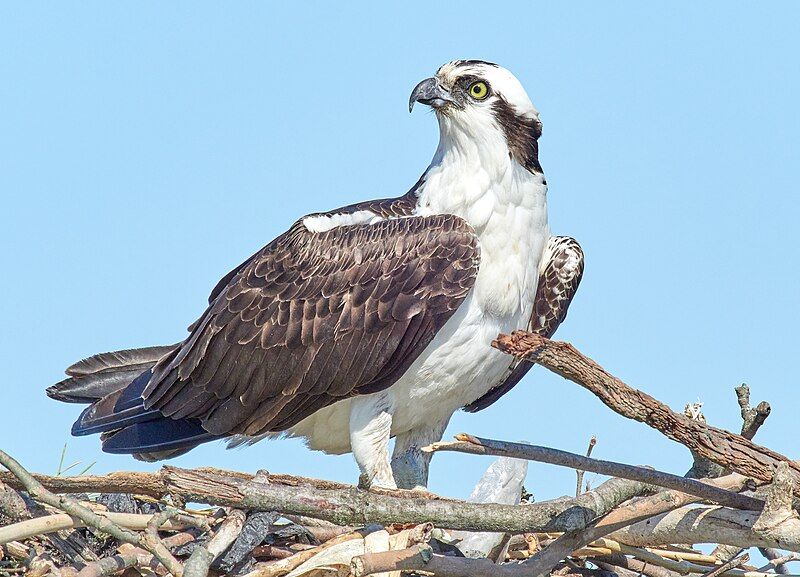
The Osprey is a bird of prey that is found all over the world. It is a large raptor, typically reaching over 60 cm long and 180 cm in wingspan. It has a brown colour on its upper parts and a predominantly greyish colouring on its head and underside.
It is also known as the sea hawk, river hawk, and fish hawk, as it mainly feeds on fish. The Osprey is diurnal, meaning it is active during the day. It is carnivorous, meaning it eats other animals and has evolved to be a very effective hunter.
It has powerful paws to grab and hold its prey, and its curved beak is perfect for tearing flesh. Its keen eyesight enables it to spot its prey from far away, and its feathers are water-resistant, allowing it to swoop down and grab fish from the water.
The Osprey is a remarkable bird of prey, and its cosmopolitan range ensures that it can be found in many different places worldwide.
| Kingdom | Animalia |
| Phylum | Chordata |
| Class | Aves |
| Order | Accipitriformes |
| Family | Pandionidae |
| Genus | Pandion |
| Species | P. haliaetus |
4. Great Egret
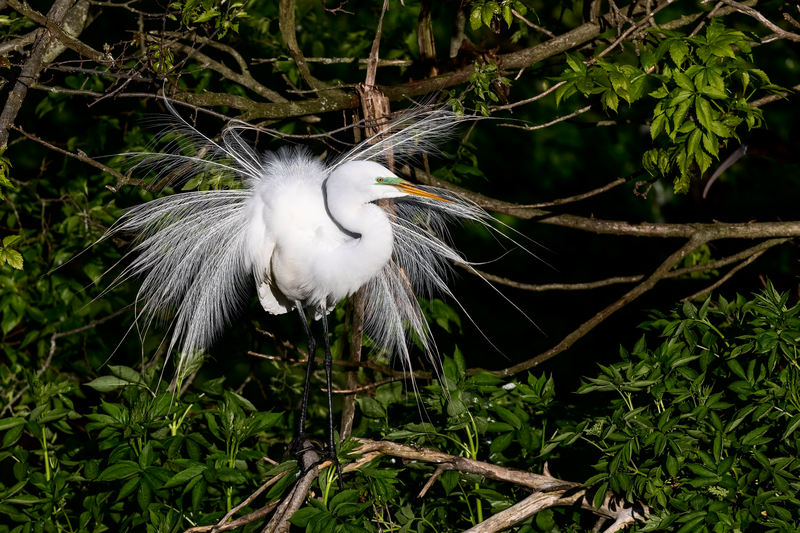
The great egret is an impressive bird species known by various names, including the common egret, large egret, great white egret, and great white heron.
This egret species is widely distributed worldwide, with four distinct subspecies found in Asia, Africa, the Americas, and southern Europe.
The great egret has been seen more often in northern Europe in recent years, indicating its range gradually expanding. This egret species is large, with a wingspan of up to 1.5 meters.
They have long, S-shaped necks and long, black legs that end in yellow feet. The body of the great egret is white, with black and yellow feathers on the head and wings. Its powerful beak is yellow and usually feeds on small fishes and insects.
The great egret is a sociable bird, often found in groups near water. They build their nests in trees and lay up to five eggs at a time. They are an essential part of wetland ecosystems, helping to keep insect populations in check and providing food for other species.
This egret species is considered the least concerning by the International Union for Conservation of Nature. It is protected by various laws in many countries, and conservation efforts are helping to ensure that the population of great egrets remains healthy.
| Kingdom | Animalia |
| Phylum | Chordata |
| Class | Aves |
| Order | Pelecaniformes |
| Family | Ardeidae |
| Genus | Ardea |
| Species | A. alba |
5. Frigatebird
Frigatebirds are a unique family of seabirds that can be found all over the world in tropical and subtropical oceans. They are classified in a single genus, Fregata, and five species live.
All species have a similar look; they have black plumage, long tails with a deep fork shape, and long hooked bills. Frigatebirds are very adept at flying, as they can soar for long periods without flapping their wings.
They can also use air currents to glide effortlessly in the sky. Additionally, they have been known to steal food from other birds, as well as fish from the surface of the ocean.
They are very social birds and can be seen in large flocks, often chasing after prey or flying in formation.
| Kingdom | Animalia |
| Phylum | Chordata |
| Class | Aves |
| Order | Suliformes |
| Family | Fregatidae |
| Genus | Fregata |
6. Brown Pelican
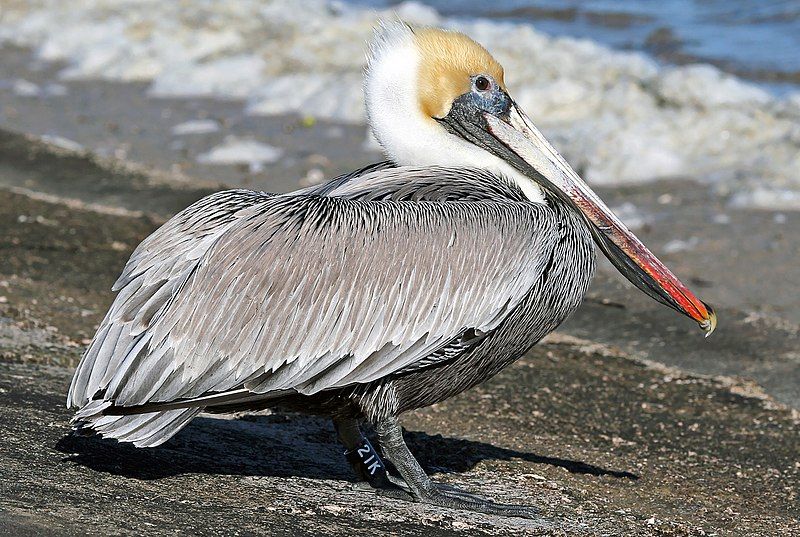
The brown pelican is an aquatic bird species that belongs to the family Pelecanidae. It is one of three species found in the Americas and one of two that feed by diving into the water.
This species of pelican is unique because it is the only one that actively dives into the water to catch its prey. The brown pelican has an impressive wingspan of up to 8 feet and a body length of up to 5 feet.
They are found on coasts, estuaries, and other inland waters and are often seen flying close to the water’s surface in search of food. Fish, frogs, and other small aquatic animals comprise the pelican’s diet.
They can dive up to 20 feet underwater to catch their prey and usually swallow the food whole without chewing. The brown pelican is a fascinating bird essential in maintaining the balance of its aquatic habitat.
| Kingdom | Animalia |
| Phylum | Chordata |
| Class | Aves |
| Order | Pelecaniformes |
| Family | Pelecanidae |
| Genus | Pelecanus |
| Species | P. occidentalis |
7. Anhinga
The Anhinga is a bird native to the warmer climates of the Americas. Other names, such as snakebird, darter, American darter, and water turkey, also know it.
The word Anhinga originates from the Tupi language spoken in Brazil and translates to “devil bird” or “snake bird”. This name was given to the Anhinga due to its long, snake-like neck and how it swims in the water.
It is a water bird, often seen with its wings spread wide to dry in the sun, and its long neck often dives into the water searching for food. The Anhinga is a unique bird adapted to its environment and is an integral part of the ecosystem.
| Kingdom | Animalia |
| Phylum | Chordata |
| Class | Aves |
| Order | Suliformes |
| Family | Anhingidae |
| Genus | Anhinga |
| Species | A. anhinga |
8. Magnificent Frigatebird
The magnificent frigatebird is a majestic seabird from the Fregatidae family, also known as frigatebirds. It is the largest species of this family, measuring between 89 and 114 centimetres and having a wingspan of 2.17 to 2.44 meters.
The magnificent frigatebird is well adapted to its marine environment, with webbed feet and excellent swimming capabilities. It is also an expert flier, capable of soaring for hours.
This species has distinctive black feathers, a deep forked tail, and a striking red pouch under its beak. It feeds mainly on fish, squid, and other small marine animals, which it catches in midair or by swooping down on the water.
It is also known to scavenge for food, following other seabirds or fishing boats. The magnificent frigatebird has a wide distribution, ranging from the Atlantic and Pacific coasts of North and South America to the coasts of Africa, Asia, and Australia.
It is a highly social species, often congregating in large flocks above the sea.
| Kingdom | Animalia |
| Phylum | Chordata |
| Class | Aves |
| Order | Suliformes |
| Family | Fregatidae |
| Genus | Fregata |
| Species | F. magnificens |
9. Great Blue Heron
The great blue heron is a majestic species of bird that belongs to the heron family Ardeidae. It is a large wading bird, measuring up to 4.5 feet in length, with a wingspan of 6.6 feet.
It is found near the shores of open water and in wetlands across much of North and Central America, along with some parts of northwestern South America, the Caribbean, and the Galápagos Islands.
The great blue heron has a predominantly grey body, a white head and neck, a yellow beak, and black legs and feet. Its long, slender neck gives it a graceful and elegant appearance as it wades in shallow waters.
The great blue heron feeds on various animals, including small fish, amphibians, reptiles, crustaceans, and insects. They can also be seen scavenging for food in garbage dumps.
The great blue heron is an integral part of many diverse ecosystems, helping to maintain healthy populations of its prey species and contributing to the overall balance of the local environment.
| Kingdom | Animalia |
| Phylum | Chordata |
| Class | Aves |
| Order | Pelecaniformes |
| Family | Ardeidae |
| Genus | Ardea |
| Species | A. herodias |
10. American Flamingo
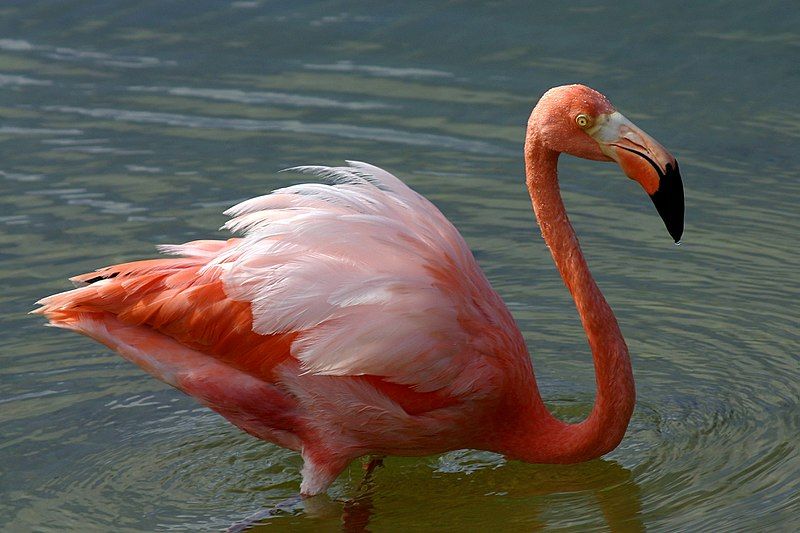
The American flamingo is a species of flamingo closely related to both the greater flamingo and the Chilean flamingo and is native to the Neotropics. It is a giant flamingo once considered the same species as the greater flamingo.
However, this view is no longer held due to insufficient evidence. Studies have found enough differences between the two species to clearly distinguish them, such as the size of their feathers and the colour of their legs.
As a result, the American flamingo is now considered to be a separate species.
| Kingdom | Animalia |
| Phylum | Chordata |
| Class | Aves |
| Order | Phoenicopteriformes |
| Family | Phoenicopteridae |
| Genus | Phoenicopterus |
| Species | P. ruber |
11. White-crowned Pigeon
The white-crowned pigeon is a species of bird in the Columbidae family, which includes doves and pigeons. The bird lives primarily in the Caribbean and consumes fruits and seeds for sustenance.
The famous ornithologist and painter John James Audubon featured this species in his work, Birds of America. He included a watercolour painting of the white-crowned pigeon in the publication, which was released in the early 19th century.
Audubon’s painting of this species is highly detailed and lifelike, showcasing the beauty of these birds. His inclusion of the white-crowned pigeon in Birds of America has helped preserve the species for generations.
| Kingdom | Animalia |
| Phylum | Chordata |
| Class | Aves |
| Order | Columbiformes |
| Family | Columbidae |
| Genus | Patagioenas |
| Species | P. leucocephala |
12. American White Pelican
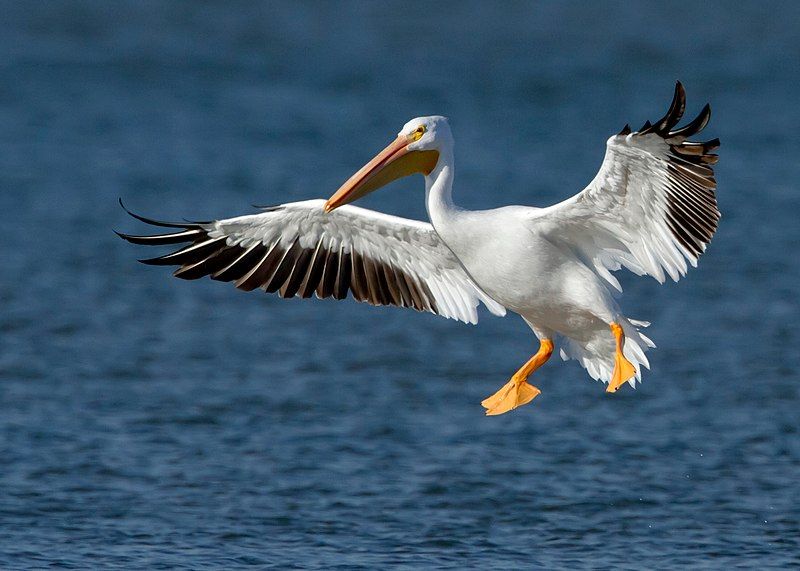
The American white pelican is a majestic aquatic bird belonging to the order Pelecaniformes, comprised of other large aquatic birds such as pelicans, gannets, cormorants, and frigatebirds.
It typically breeds in inland North America during the summer, then migrates to warmer climates for the winter. The American white pelican is known to travel south and to the coasts, covering large distances in search of warmer temperatures.
It has been known to travel south of Costa Rica during the colder months. The American white pelican typically prefers to inhabit areas with large bodies of water, where it can find plenty of fish to feed.
It is also a powerful flier and can often be seen soaring high in the sky for long periods.
| Kingdom | Animalia |
| Phylum | Chordata |
| Class | Aves |
| Order | Pelecaniformes |
| Family | Pelecanidae |
| Genus | Pelecanus |
| Species | P. erythrorhynchos |
Conclusion
Birds are an integral part of the Keys ecosystem. They provide a vital food source for other animals, help pollinate plants, and add to the beauty of the Keys with their bright colours.
The Keys are a great place to observe birds in their natural habitat, and birdwatching is a popular activity for locals and visitors alike.
Protecting the environment and preserving bird habitats is essential for ensuring the Keys remain a haven for birds and other wildlife.